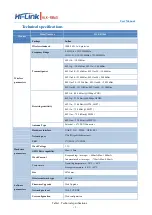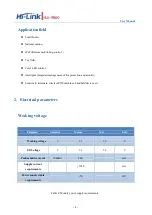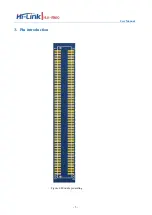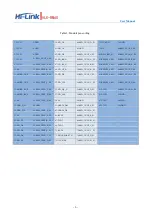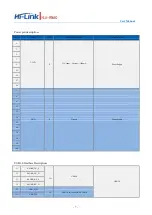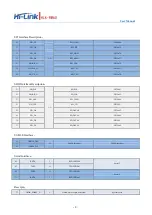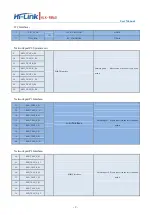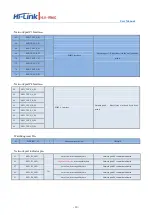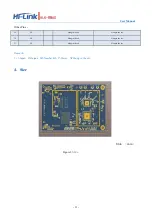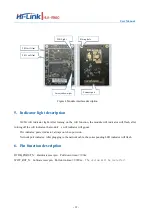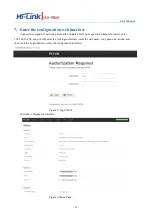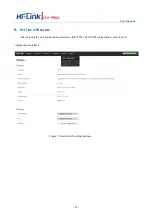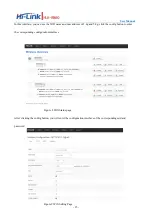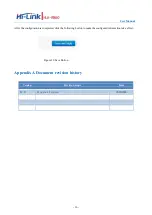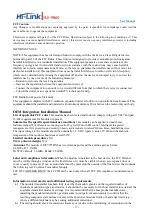
User Manual
- 17 -
FCC Caution:
Any Changes or modifications not expressly approved by the party responsible for compliance could void the
user's authority to operate the equipment.
This device complies with part 15 of the FCC Rules. Operation is subject to the following two conditions: (1) This
device may not cause harmful interference, and (2) this device must accept any interference received, including
interference that may cause undesired operation.
IMPORTANT NOTE:
NOTE: This equipment has been tested and found to comply with the limits for a Class B digital device,
pursuant to part 15 of the FCC Rules. These limits are designed to provide reasonable protection against
harmful interference in a residential installation. This equipment generates, uses and can radiate radio
frequency energy and, if not installed and used in accordance with the instructions, may cause harmful
interference to radio communications. However, there is no guarantee that interference will not occur in a
particular installation. If this equipment does cause harmful interference to radio or television reception,
which can be determined by turning the equipment off and on, the user is encouraged to try to correct the
interference by one or more of the following measures:
—Reorient or relocate the receiving antenna.
—Increase the separation between the equipment and receiver.
—Connect the equipment into an outlet on a circuit different from that to which the receiver is connected.
—Consult the dealer or an experienced radio/TV technician for help.
FCC Radiation Exposure Statement:
This equipment complies with FCC radiation exposure limits set forth for an uncontrolled environment .This
equipment should be installed and operated with minimum distance 20cm between the radiator& your body.
OEM/Integrators Installation Manual
List of applicable FCC rules
This module has been tested and found to comply with part 15.247 and part
15.407 requirements for Modular Approval.
Summarize the specific operational use conditions
This module can be applied in Smart home,
Instrumentation; Wi-Fi Remote monitoring/control;Toy field; Color LED control; Intelligent integrated
management of fire protection and security; Smart card terminals, wireless POS machines, handheld devices.
The input voltage to the module should be nominally 3.3 VDC, typical value 3.3VDC and the ambient
temperature of the module should not exceed 60
℃.
Limited module procedures
N/A
Trace antenna designs
N/A
Antennas
The module of MT7975DN has two Antenna ports and the antenna gain as below:
2.4G Wi-Fi: 3.13dBi;
5G Wi-Fi: Band1: 3.62dBi, Band4: 3.52dBi.
Label and compliance information
When the module is installed in the host device, the FCC ID label
must be visible through a window on the final device or it must be visible when an access panel, door or
cover is easily re
‐moved. If not, a second label must be placed on the outside of the final device that contains
the following text: Contains Transmitter Module
FCC ID: 2AD56HLK-RM60, the FCC ID can be used only when all FCC ID compliance requirements are
met.
Information on test modes and additional testing requirements
a)
The modular transmitter has been fully tested by the module grantee on the required number of
channels, modulation types, and modes, it should not be necessary for the host installer to re
‐test all the
available transmitter modes or settings. It is recommended that the host product manufacturer,
installing the modular transmitter, perform some investigative measurements to confirm that the
resulting composite system does not exceed the spurious emissions limits or band edge limits (e.g.,
where a different antenna may be causing additional emissions).
b)
The testing should check for emissions that may occur due to the intermixing of emissions with the

